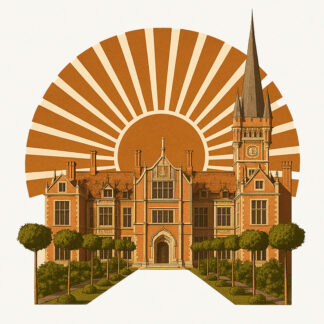Exploring Lentvaris before the First World War
Postcards were an essential means of interpersonal communication in the late 19th and early 20th centuries. They were an important tool for people to send greetings and share their travels, as well as for artists and photographers to showcase their works. As photographic technology and printing techniques improved, the demand for illustrated postcards grew, and new publishers appeared in the Russian Empire every year.
Lithuania was no exception to this trend, and the country had its own share of postcard publishers. Lentvaris, a suburb of Vilnius, was also featured on postcards, usually in conjunction with the capital city. The Paneriai train tunnel, a major engineering feat at the time, was a popular subject for postcards. One of the earliest postcards featuring the tunnel was published at the end of 1904 by Davydas Vizūnas, a Vilnius postcard publisher. The publisher issued 61 series of postcards dedicated to Vilnius, but after the publication of the postcard featuring the tunnel, the publisher was no longer interested in Lentvaris.
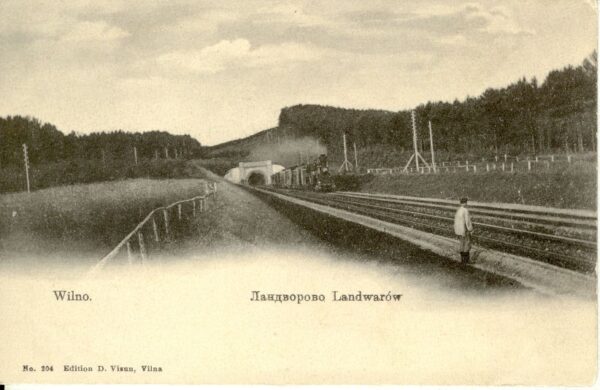
In 1906, Vilnius engineer Petras Vileišis published a postcard featuring the Paneriai tunnel as part of a set of 30 postcards, four each for Vilnius and Trakai, and one for the tunnel. The postcard featured the Lithuanian equivalent of the Lithuanian translation of Lentvaris, suggesting it be called “Lintvariai or Lendvarava.” Although the proposals did not succeed, the intention was of general importance at the time in the Lithuanianisation of Lithuanian town names.
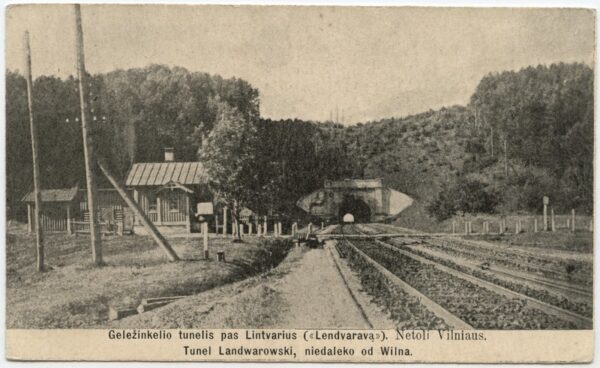
Ambraam Fialko, a Vilnius postcard publisher and publishing agent, also published several postcards featuring Lentvaris. Fialko stamped his postcards with the publisher’s stamp, with the letters “A. F. W.” Among his 754 postcards, there were six with images of Lentvaris, including one featuring the road to Lentvaris and another with holidaymakers strolling on the shores of Lake Lentvaris with the Tiškevičius Palace in the background.
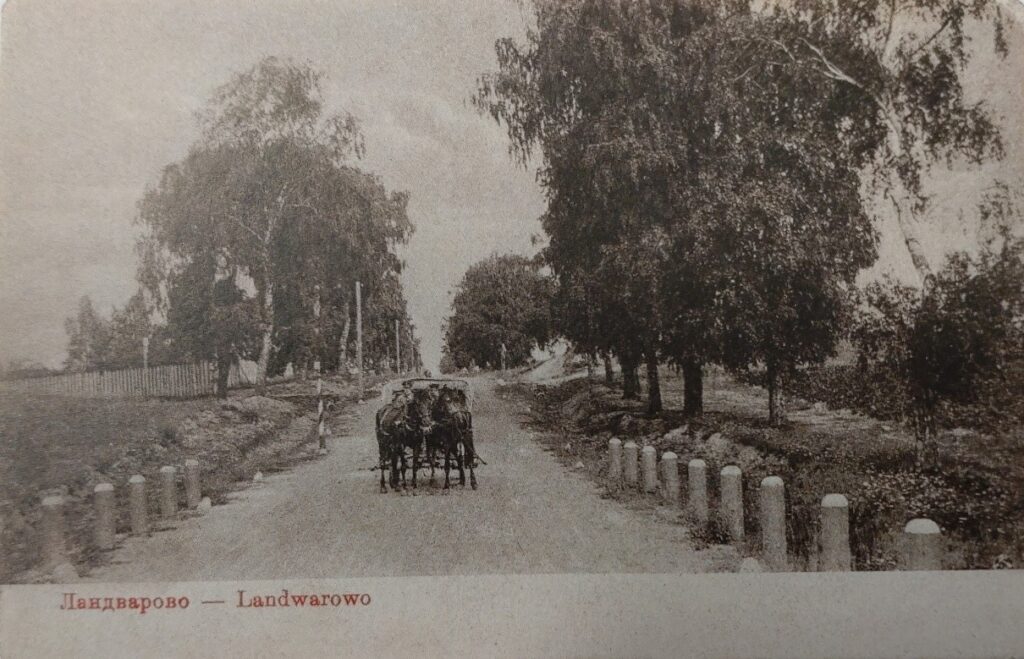
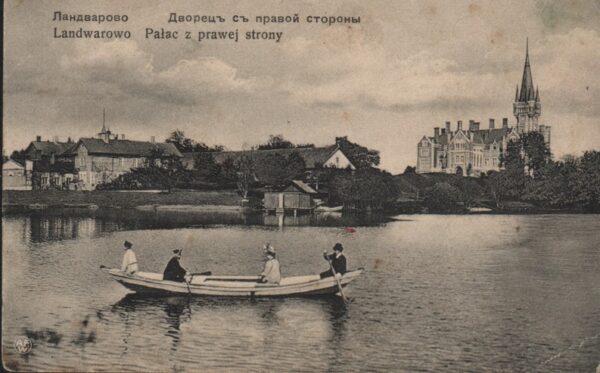
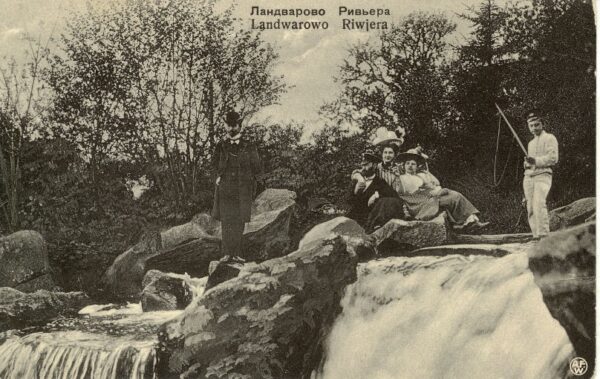
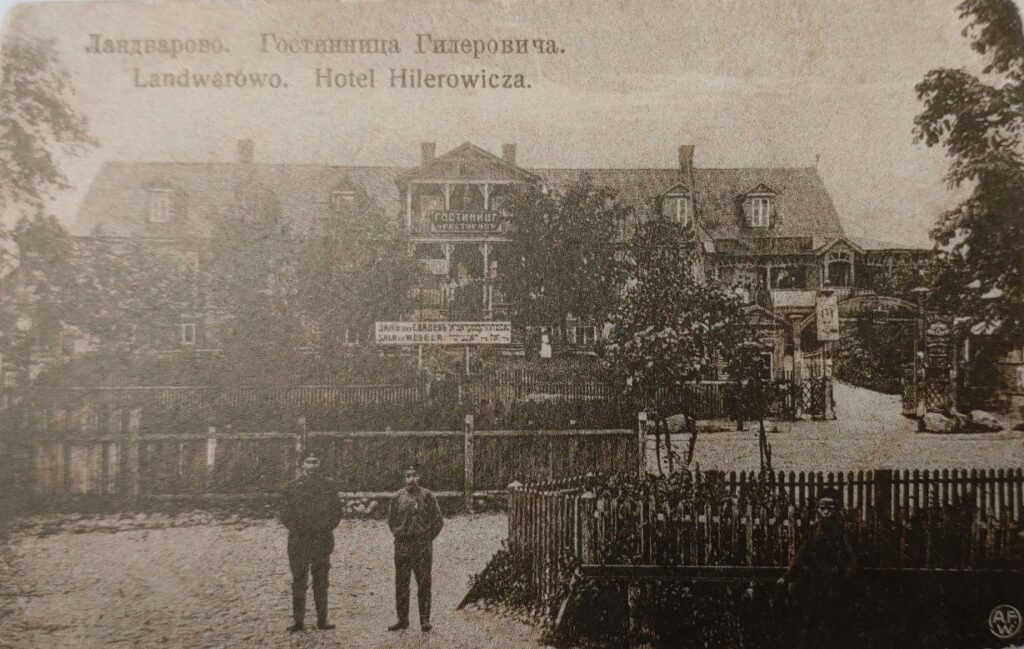
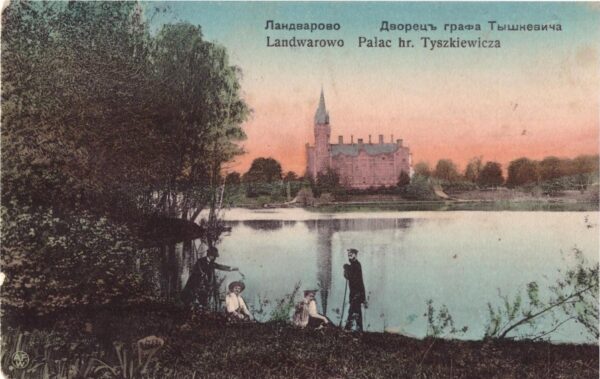
Boleslovas Stadzevičius (1875-1947), a well-known postcard publisher from Vilnius, was also interested in Lentvaris. He published about 200 postcards in 1906-1909. The famous Vilnius photographer Janas Hermanovičius took pictures of the Lentvaris Palace for B. Stadzevičius. The publisher reproduced two photographs by Jan Hermanovičius. The postcard “Lentvaravas Palace” also had two issues. The first edition combined Polish and Lithuanian titles, while the third edition added a Russian title to the language duo. The second postcard “Lentvaras” was published in two editions: in Polish and Lithuanian and in Polish and Russian.
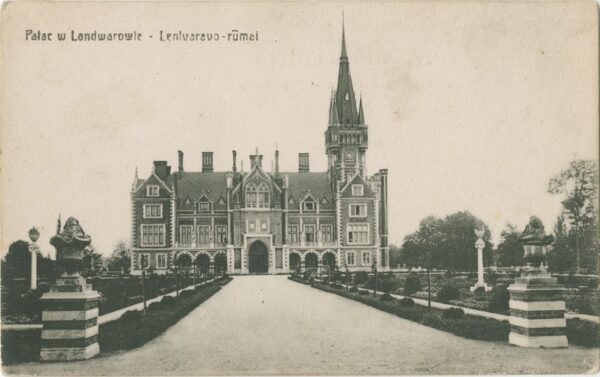
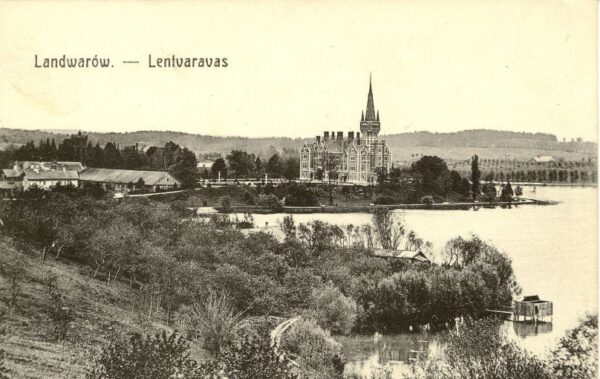
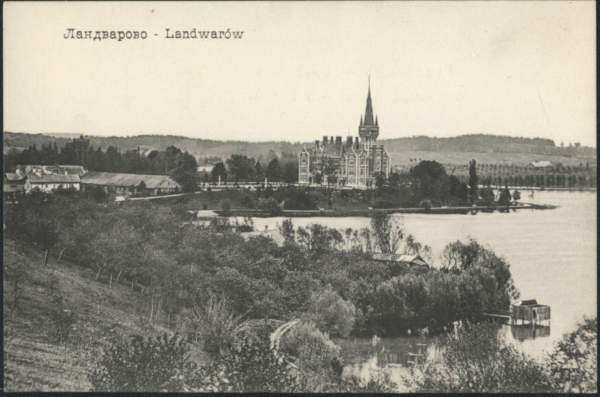
In 1906-1907, Antonis Žukovskis, a stationery shop owner from Vilnius, started publishing postcards with images of Vilnius and Lentvaris. The publisher cooperated with the Vilnius photographer V. Tomaševičius, and this information is given on the postcards themselves. Žukovskis published about 80 postcards of Vilnius and its surroundings. Four postcards were devoted to Lentvaris, depicting the Tiškevičius Palace and Lake Lentvaris. It is true that there could have been more, as the one postcard with a color edition suggests that other monochrome postcards may have had color editions.
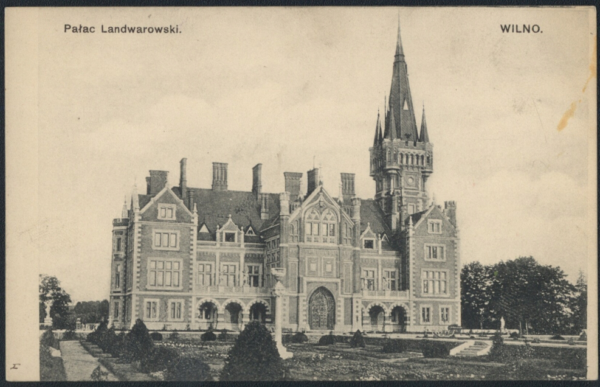
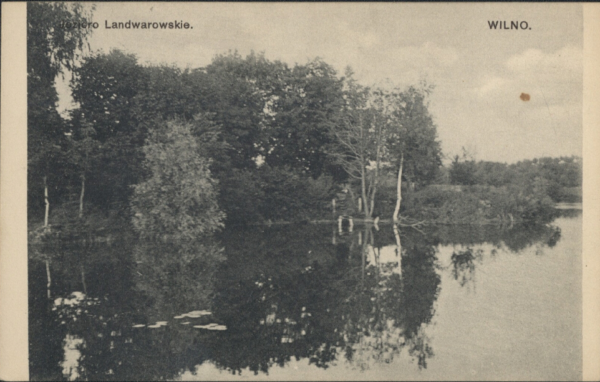
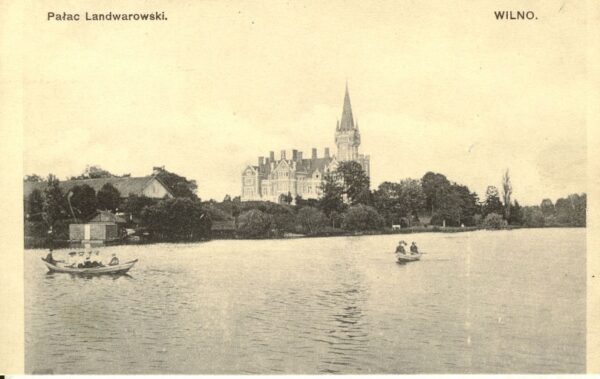
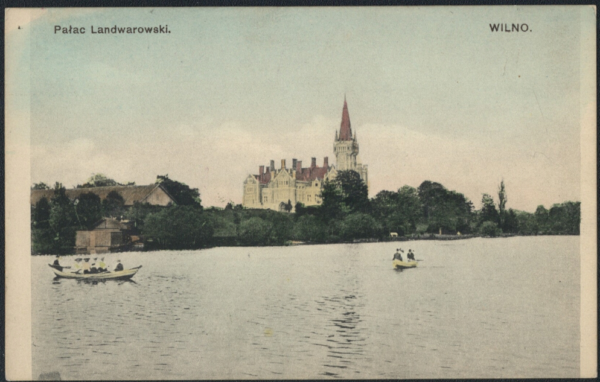
One of the Lentvary picture postcards was also issued by the St Eugenia Red Cross Society, the largest charitable society in Russia. D. Keršytė stated that during the years of her active publishing activity (1896-1917), she published 6406 postcards. Of these, 79 were devoted to images of Vilnius, Trakai and Lentvaris.
Although the Society worked with well-known photographers, it collaborated with the aforementioned Vilnius publisher A. Fialko for the Lentvaris postcard. One image of the Lentvaris Palace, taken from the side of the Rivjera café, is reproduced. However, the title has been slightly changed, emphasizing the proximity to Vilnius and the entertainment side of the town rather than the Tiškevičius Palace.

Images of Lentvaris were also published by another well-known postcard publishing company in Moscow, Printing Contractor, established in 1907-1910. The company’s productive activity developed after Alexei Suvorin acquired a set of photographic negatives by another publisher, Dmitry Yefimov. The company was able to print the images already published by Yefimov, but also worked with other photographers.
The company had the exclusive right to distribute the postcards at railway stations throughout the Russian Empire. The publisher paid considerable attention to images of Vilnius, Trakai and Lentvaris. Some of the images on the postcards were taken by the Moscow photographer A. Yermakov.
He visited Lentvaris in 1907. “The postcards of ‘Press Contractor’ are distinguished by a pronounced advertising component, with the Tiškevičius’ café ‘Riviera’ being emphasised in the inscriptions and images. Keršytė has identified three postcards from Lentvaris, but there is also another one with the serial number 64.
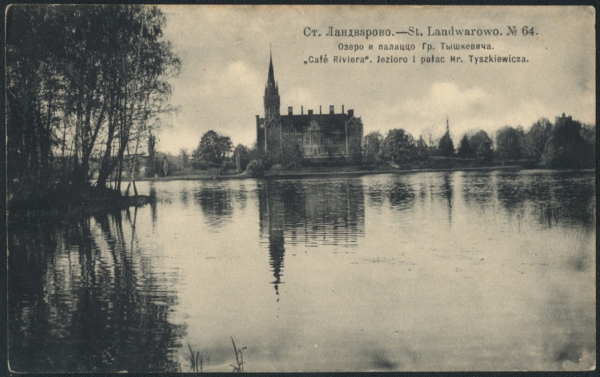
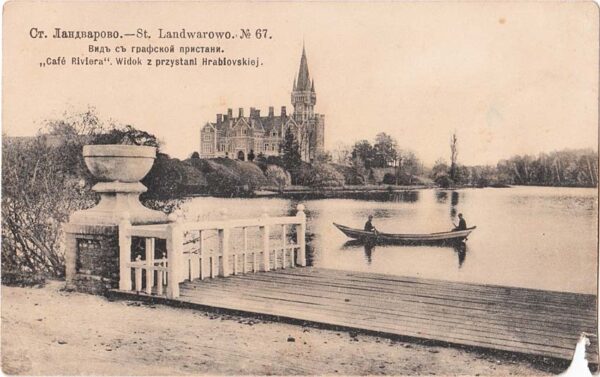
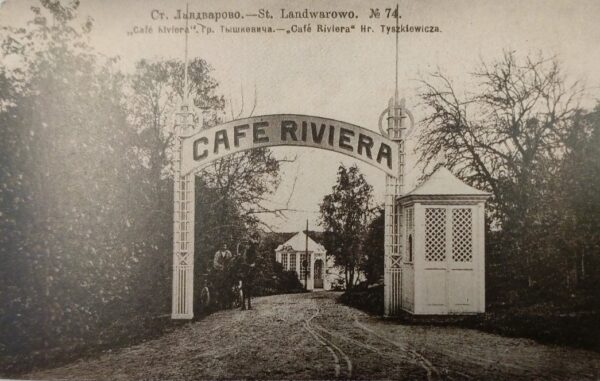
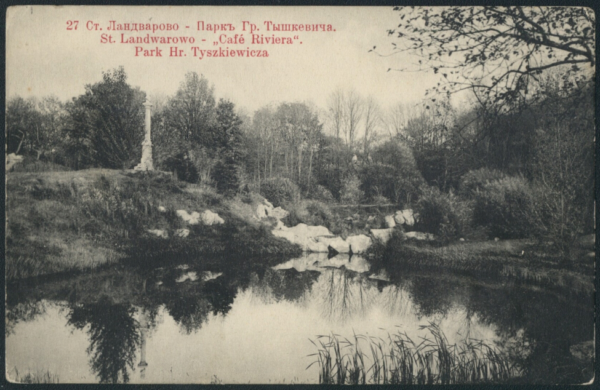
“In 1910, the Press Contractors’ Agency ceased its activities and its heir and successor was Alexei Suvorin, who, with his partners, founded the A. Suvorin & Co. Contractors’ Agency in 1911. The company was transferred to Moscow and continued its activities there. After the new company secured the exclusive right to continue selling postcards in railway station kiosks, the popular series from Vilnius and its surroundings were reissued annually.
However, the images by the photographer A. Jermakov were no longer used to advertise the Tiškevičius’ café Riviera, and the titles were more in line with the content of the images.
Cities and towns along the main railway lines have always been of interest to travelers, and postcards on these themes were popular. The appearance of Lentvaris in the postcards was linked to the proximity of Vilnius as the capital of the province. Vilnius and its surroundings attracted the attention of local publishers as well as publishers in St Petersburg and Moscow.
The economic initiatives of the Counts of Tiškevičius played an important role in the choice of images for the postcards and the creation of their catchy titles. The Tiškevičius dominated: their palace and the surroundings of the Riviera Café were clearly visible. Lentvaris created the impression of a resort, and the postcards in themselves promoted the area, bringing benefits and recognition to the owners of the estate. The postcard publishers of the multi-ethnic Russian Empire saw the town not only as Polish or Russian, but also as Lithuanian.
The variety of languages is reflected in their names. The old postcards form an important part of our heritage, which has not yet been fully collected and explored, so in the future, unknown images may still emerge, helping us to imagine how tourists and visitors saw the city from the window of a train or when they stepped out for a stroll.
The postcards hold secrets too. If we look closely at the people depicted on the postcards, we can see a recurring middle-aged man in uniform, with a black beard and a broad hat. Who is this man? There are easier mysteries. The postcards also reflect national relations. Look at Mr Hilerovic’s outdoor advertising and you will find three languages, completely ignoring the largest ethnic group in the land.
Sources and Literature:
- Tomas Petreikis. Images of Lentvaris in the First Lithuanian Postcards [online resource]. “Klevų alėja,” December 31, 2020.
- Tomas Petreikis. The Name of Lentvaris in the First Lithuanian Postcards [online resource]. “Klevų alėja,” November 30, 2020.
- “Postcards of Vilnius Views 1897–1915.” Compiled by Dalia Keršytė. Vilnius: Lithuanian National Museum, 2019, pp. 203, 255, 361, 364, 384, 390, 422, 440, 468, 488, 489, 498, 515, 519, 566, and others.

